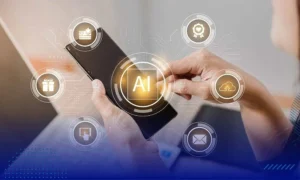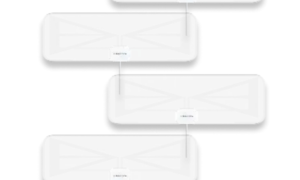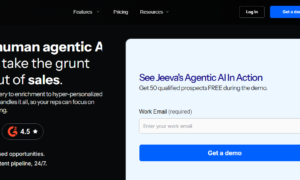In today’s digital age, having a smartphone isn’t just a luxury, it’s a necessity. But what if you’re struggling to afford one? Don’t worry, the government’s got your back. They’ve launched programs like the Lifeline program and the Free iPhone Program in 2024, specifically designed to empower underserved communities and promote connectivity.
These programs offer free government iPhones to eligible families, helping them stay connected to work, school, and healthcare providers. But how do you qualify for these programs? It’s all about meeting certain eligibility criteria and participating in government assistance programs. So, if you’re finding it tough to make ends meet, read on. You might just be able to snag a free iPhone.
Overview of Government Programs for Free iPhones
The iPhone 13 series introduced in 2021 touted the A15 Bionic chip improved photography features and a beefed-up battery life. The government programs, notably the Lifeline program and the Free iPhone from the Government, allow eligible families to get these top-notch devices without any cost. Getting an iPhone 13 via the program involves visiting the Affordable Connectivity Program (ACP) portal and verifying your eligibility which has broadened to include participants from more government assistance schemes.
The government’s partnership with more carriers ensures an expansive distribution network. Benefits can now be accessed from a wide assortment of service providers. Also, the eligibility rules have been made more inclusive keeping in mind the financial challenges many are facing due to recent global events.
Eligibility Criteria for Free iPhones
As you explore the guitar of acquiring a free iPhone through U.S. government programs, it’s important to understand the various eligibilities one has to meet. These are divided into income requirements and participation in specific federal assistance programs.
Income Requirements
Low-income individuals or families can benefit from these government programs allocating free iPhones. But what makes one a low-income earner? This comes from evaluating household income against the Federal Poverty Guidelines. If your total household income stands at or below 135% of these guidelines, you fit within this bracket and are eligible for a free iPhone under these initiatives. Below is the table of the Federal Poverty Guidelines:
| Household size │ Income at 135% of poverty level |
|——————–|————————————|
| 1 │ $17,226 |
| 2 │ $23,274 |
| 3 │ $29,322 |
| 4 │ $35,370 |
| 5 │ $41,418 |
| 6 │ $47,466 |
Figures are subject to change yearly based on inflation rates.
Participation in Government Assistance Programs
Beyond income, the U.S. government uses participation in specific assistance programs as an avenue for free iPhone qualification. If you’re a participant in government assistance programs such as Medicaid, SNAP (Supplemental Nutrition Assistance Program), or SSI (Supplemental Security Income), then you may qualify for a free iPhone.
These government assistance programs serve low-income households and individuals. By being a part of these initiatives, it’s deemed you’re facing economic hardships, making you eligible for further assistance through a free iPhone initiative.
It’s essential to note that eligibility criteria may vary by state and provider. Therefore, it’s best to check with the National Verifier and your carrier for the most up-to-date information on eligibility.
Having clarified the income requirements and the necessity of involvement in specific federal assistance programs for being eligible, it’s crucial to understand the process’s nitty-gritty. But more on that in the upcoming sections.
Application Process for a Free iPhone
Navigating through the process of obtaining a free iPhone through government programs can feel complex, but let’s break it down. In essence, it’s all about meeting eligibility criteria, locating participating providers, and providing necessary documentation.
Required Documents
Each applicant, regardless of their state of residence or service provider, must present certain documents to prove their eligibility. Some of these may include:
- Proof of income (Tax return or Pay stub)
- Proof of participation in government assistance programs (Medicaid, SNAP, SSI, Federal Public Housing Assistance, etc.)
- Government-issued ID (Driver’s license or Passport)
Remember, this document list isn’t exhaustive, and the necessary paperwork may vary based on the specific provider and state requirements. Providing accurate and recent documents is essential to verify your eligibility and aids in smooth processing of your application.
Submission Methods
Once you’ve gathered all the required documents, the next step in the process is the actual application. The entire procedure can be completed online, keeping it quick and efficient.
You’ll need to select the participating providers in your location, which can be found on the Lifeline National Verifier website. Once you’ve contacted a provider and confirmed their program participation, you can begin the application process.
Generally, this involves filling out an application form—either online or on paper—accompanied by your collected documents. This process could look slightly different depending on your chosen provider.
On approval—which can take some time due to thorough verification procedures—your free government-issued iPhone should be with you in a few weeks.
Mediating through a complex landscape of the program can seem daunting, but knowing what to expect can transform your journey for a free iPhone into a straightforward task. Stay patient, stay informed, and stay optimistic—getting your iPhone is just around the corner.
Tips for Increasing Your Chances of Qualifying
Keeping your application data updated is one way to increase your chances of qualifying for a free iPhone. Be methodical in your application, provide relevant data and required documents correctly. Your patience and persistence will pay off.
You should also try to maintain your eligibility status, which is mainly determined by your income level and participation in government assistance programs. Regularly recertifying your eligibility (usually on an annual basis) keeps you in good standing and assures uninterrupted service.
Finally, stay informed about any request for additional information from your service provider. Showing prompt responses not only speeds up your application process but also keeps you in favorable regard with the provider.
Awareness, patience, persistence, and upfront honesty are the keys to increase your chances of getting a free iPhone.



































